The Breakdown
Pros
Cons
Introduction
It seems such a long time ago, June 2020 to be exact, when SENA Technologies, Inc. announced the (pending) launch of the premium HD Speaker Kits for the 5S, 10C Pro and 10C EVO, 20S and 20S EVO, and 30K, providing users with the same HD audio experience provided with the 50-series systems.
And later in the year, the SENA premium HD Speaker kits did start to become available, although supply was and remains an issue and not just for the motorcycling industry; it is a fact of life and one exacerbated on a global basis by the COVID-19 pandemic.
SENA’s press announcement at the end of January this year confirming that both kits were now available, although in limited supply, was good news. And a couple of weeks later, one of the two packages from SENA contained two of the premium HD Speaker kits, one Type A and one Type B.
And another of the very welcome packages from SENA contained something that really helped dispel some of the winter-cabin-fever blues – a SENA 10C-EVO-01 Bluetooth/4K camera system, now in use and under test as an ongoing wBW Review and, just coincidentally, it is an ideal candidate for the Type B HD speaker kit.
Shopping Now? We Recommend:
webBikeWorld works closely with Revzilla and Amazon to provide our testers with quality products to review. While we have an affiliate relationship and receive a commission from items purchased, this addition comes at no additional cost to you. It is the primary way we pay for our site and reviewers.
RevZilla
Free shipping on orders over $40
30-day no-nonsense return policy
Excellent selection of all major brands
Awesome pricing
Amazon
Free shipping (with Amazon Prime)
30-day return policy
Excellent selection
Competitive pricing
SENA Premium Accessory HD Speakers
These premium HD Speaker, first seen and used with the SENA 50S and 50R systems reviewed back in August of 2020, provide a real and discernable increase in volume, bass boost and overall clarity for a (much) enhanced audio experience.
With a 40mm diameter and 10mm thick (speaker and foam cover) the pieces feature a new beveled shaping around the diameter, providing a lower fit profile whether recessed into prepared housings, pockets or sitting on the inner liner. And if fitted close to the ear the new shaping (along with the foam covers) serves to minimize or eliminate contact pressure.
In addition to these new physical pieces a firmware upgrade for each supported device is also provided with audio related enhancements; this hardware and software combination provides the user with the optimal audio experience.
With the system specific firmware update installed and the respective App installed, the user only needs to launch the App, select the new HD Speaker Accessory setting, and activate it, which then provides the user with the ability to choose between four discrete EQ or equalizer-based audio output settings.
SENA Audio Equalizer or EQ Settings
The audio (frequency) spectrum which is the nominal hearing range for humans is between 20Hz to 20,000Hz (Hz = cycles per second). This spectrum is typically broken down into seven frequency bands or ranges as there can be some variance between them: sub-bass, bass, low midrange, midrange, upper midrange, presence, and brilliance.
While the audio spectrum is an established linear scale, as humans our individual abilities and capabilities vary widely regarding hearing or interpreting the audio spectrum. And due to many factors, including age and aging, hearing loss or damage is a fact of life; and this fact of life is very predominant among motorcyclists.
As such, many of us need a bit of help shall we say in adjusting to or in balancing the audio we do or can hear. One of the best ways to do this, thanks to technology, is with a hardware or software (graphic) or audio equalizer (EQ) – a capability that can really help in listening to complex audio, especially music that has thousands of frequencies mixed together.
The SENA Audio Equalizer or EQ Feature is not the first to market and indeed it has some stiff competition among other players. But it does provide a very welcome and (long-overdue) major boost (literally) to the standard SENA audio capabilities (including speakers) present in the 30K, 20S and 10C series systems.
With the premium HD Speakers and the firmware-based, App-managed Audio Equalizer or EQ feature, SENA addresses a wide-range of issues related to audio, clarity, and output; all near and dear to motorcyclists or anyone who lives, works, and plays in noisy environments.
This new Audio Equalizer (EQ) feature has the following selectable settings:
- OFF – self explanatory, music from a source (steaming, FM, phone, intercom)
- Balanced
- Bass Boost
- Mid Boost, and
- Treble Boost
HD Speaker Kit Types – there are two Premium HD Speaker kits, one is Type A and the other Type B, but the only difference between the two, other than the purposeful colouring of the packaging box is the headset interface.
Type A HD Speaker Kit Specifics – for the (50S), 30K, 20S EVO and 20S systems uses the direct (straight) mini-USB connector fitted into the back port of the mounting base that is common to the 50/30/20 series models.
The compatible SENA Apps are: 50 Utility App, 30K Utility App and Sena Utility App. The SENA PN for the (Type A) kit is SC-A0325.
Type B HD Speaker Kit Specifics – for the (5S) and 10C EVO and 10C Pro BT/Camera systems that utilize the same 10-pin mini-USB connector but in an angled housing with a pivoting clasp-based connector. The compatible SENA App is the Sena Utility App. The SENA PN for the (Type B) kit is SC-A0326.
Along with the premium HD Speaker set found in each box is a set of brushed speaker rounds for helmet mounting as needed (the hook side is on the speakers) and a small multi-language (English, French, German, Spanish, and Italian) Activation Guide insert.
Note – the parenthesis around the (50S) and the (5S) are mine and meant to identify that even though both these retail kits come standard with the HD speakers, Sena has them listed as part of their overall Type A/B compatibility listings.
Common Features & Specifications
Features (Compilation)
- Powerful, clear, comfortable 40mm speakers with foam covers
- Performance Increase: greater than or equal to 50% increase in clarity
- Bass Boost Feature (with Audio Equalizer Feature enabled under applicable App)
- Beveled shaping of the housing perimeter (mounting side) for easy fit into speaker pockets or shaped recesses
- Individual speaker leads are long for fitment flexibility
Specifications
- Size: 40mm diameter by 10mm thick (speaker and foam cover)
- Impedance: 30 +/- 10% Ohm
- Power Rating: Normal 20mW, Max 30mW
- Frequency: 90 to 20,000Hz
- Interface Connection: 10 Pin mini-USB, Type A housing is straight, Type B housing is angled
Preparing Your Device for HD Speaker Accessory Use
Before you tear open the Type A and/or Type B box, hastily remove the current speakers and work feverishly to install the new HD Accessory Speaker pieces to use them with your favourites – chill.
There are a couple of things to know, and do, before you can get the optimal audio experience from your system. The instructions provided in the small Activation Guide tucked into each box will get you up and running without issue.
But if more information is desired, SENA provides an overview of the steps under the community/blog/sena-hd speakers link, with more detailed information to be found under the specific (Type A) and (Type B) support pages.
The Type A and Type B support pages include the usual FAQ link; a Downloads listing for the compatible products with specific system links to facilitate the (needed) firmware update; Documents that links to the (downloadable) Activation Guide for the specific system; Videos; and Packs & Accessories.
The Basic Steps
If the host system has not been maintained from firmware perspectives (you know, that “if it ain’t broke, don’t fix it approach”) now is a good time to eschew that approach. Why? There are many reasons but for this activity it is one of the essential steps needed to get the optimal experience from the premium HD Speakers.
Step One – update the system. Install or use the Sena Device Manager software for either Windows or Apple OS. The SENA Device Manager supports all current and legacy SENA, collaborative, and unique systems (it is a long and growing list). In this case, the SENA 10C-EVO is the device to be connected to the Device Manager using the micro-USB cable.
If the system is maintained using either the 30K/20S EVO WiFi Docking Station or the newer WiFi Adapter, then the firmware may not need to be updated. Both the Sena Device Manager and applicable App will reveal the current build and let you know if there is an update.
After updating the system to the latest build, disconnect it and make sure everything is working. Although a reset or reboot is not (typically) identified for newer devices, experience is a good teacher – I usually turn the device ON for a minute or so, then turn it OFF so that the system gets a boot-up and shut-down sequence.
Note – another experience-based activity is to do periodic housekeeping, especially after a firmware update by deleting the SENA device profile on the smart device and redoing it. Clearing the pairing list on the SENA device/devices after firmware updates helps as well, acknowledging that for some configurations the rebuilding might take a few minutes.
Step Two – remove the current speakers and install the new HD speakers. The original speakers for the SENA 20S and 30K systems are slightly under 40mm in diameter and 6mm thick (without any cover), whereas the new HD Speakers have a 40mm diameter and are 10mm thick with the foam covers. Replacing the speakers should be a direct swap for most helmets, as intended.
As always, place the speakers so they are aligned with and close to the ears. The HD Speakers do have foam covers fitted – a feature that can facilitate the comfort factor especially if the user wants the speakers fitted close to the ears. Use of the included spacer pads from the original retail system kits is an expedient and effective way to get the speakers closer.
Whether the speakers are positioned close to or touch the ears is a personal preference. I prefer about 5mm or more of clearance for two reasons. First, it provides some air movement and secondly, facilitates the use of ear protection pieces – one of the best and simplest means to preserve hearing.
With the speakers nestled into place, route and connect the Type A headset connector into the port on the back of the base unit as described in the Helmet Installations Section below.
Type B connectivity is simpler in that one only needs to insert the angled connector into the port on the lower edge of the module, make sure it is seated and then push the arms of the retention clamp mount into place. (see Helmet Installations Section below for more).
Step Three – done using either the SENA Device Manager as shown in the screen snippet above or using the applicable SENA App, an example of which is shown in the screen-shot composite below. Note – the App-based approach as shown in the composite below is used for this walk-through.
To enable the HD Speaker Accessory feature, connect to the system using the SENA Device Manager (good for all devices), the 30K App for the 30K…or the Sena Utility App for the rest (20S, 20S EVO, 10C EVO, 10C Pro and 5S).
With the applicable App installed or updated, launch the App, and wait for it to find the (correct) device and read/load the settings. Select ‘Menu’’ (upper left corner icon) or the Basic Settings button. When the Main or Basic Setting screen appears, the new ‘HD Speaker Accessory’ listing is present with its ON/OFF slider on the right.
Activating this slider brings up a small pop-up screen identifying that if the ‘HD Speaker Accessory’ setting is activated, the ‘Audio Boost’ setting will automatically be disabled. Press ‘OK’ to acknowledge this fact.
Note – another pop-up Warning Screen regarding possible damage to the HD Speakers if the user turns off the HD Speaker Accessory setting while the HD Speakers are still connected for use might also be seen…
Once the HD Speaker Accessory setting is activated the Audio Equalizer setting below it becomes active. Selecting it brings up the Audio Equalizer sub-menu listing with the following options: Off, Balance, Bass Boost, Mid Boost, Treble Boost or Cancel. It’s audio play time.
Shopping Now? We Recommend:
webBikeWorld works closely with Revzilla and Amazon to provide our testers with quality products to review. While we have an affiliate relationship and receive a commission from items purchased, this addition comes at no additional cost to you. It is the primary way we pay for our site and reviewers.
RevZilla
Free shipping on orders over $40
30-day no-nonsense return policy
Excellent selection of all major brands
Awesome pricing
Amazon
Free shipping (with Amazon Prime)
30-day return policy
Excellent selection
Competitive pricing
Helmet Installations
The SENA HD Speaker Type A and Type B kits are specifically identified for certain SENA headsets and as there are a fair number of SENA systems here, as well as several helmets, it was only fair that the supplied HD Accessory Speakers kits be installed for performance assessment in multiple helmets.
The following table lists the helmets, SENA system and relevant firmware version used to date with the SENA HD Accessory Speaker kits (Type A or B), with more configurations to be tested going forward.
| Helmet | Brand/Model/Style | SENA System | Firmware | HD Kit Type |
| 1 | Schuberth C3 Pro, Modular | 50S | v.1.0.8 | A |
| Schuberth C3 Pro, Modular | 30K | v3.1.1 | A | |
| Schuberth C3 Pro, Modular | 20S | v2.0.5 | A | |
| 2 | Schuberth C3 Pro, Modular | 10C-01 EVO | v1.4 | B |
| 3 | CKX Razor RSV, Jet-Style, w/shield | 5S | v1.0.4 | B |
| 4 | NEXX X.WED2 X-Patrol, ADV Style | 30K | v3.1.1 | A |
SENA HD Speakers (Type A) Installations
Testing multiple SENA systems that use the Type A connectivity is simple as the 50S, 30K and 20S series devices fit and work on the standard base mount with its front-mounted 3.5mm external audio output and 2.5mm auxiliary input on the back.
One of the Schuberth C3 Pro helmets already hosts the SENA 50S system and as such, had the system supplied HD Speakers installed, but for this review, the original HD speakers that came with the system are removed and the provided HD Accessory Speakers installed; keep the playing field level.
The level of effort required to remove the original speakers depends somewhat on the helmet and base mounting layout. In most instances, the base piece needs removing or positioning away from the helmet, done by accessing, removing, or loosening the base inner side base screws so access to the speaker connector is provided.
With access provided, a small Phillips screwdriver (jeweller or electronic pieces work well) is used to loosen off the recessed retainer housing screw and wiggle/pull the housing with the connector out of the port.
The small plastic retainer housing itself is then removed from the original mini-USB connector and reused for the new HD Speaker connection. Install this assembly, make sure it’s fully seated and install the housing retainer screw – done. Reassemble and remount the base as needed.
As identified earlier, the new HD speaker pieces are the same diameter as the original speakers for the 20S and 30K, but about 3-4mm thicker overall with the foam covers factored in as well. Without compressing the foam, the HD speakers are 10mm thick vice the 6mm flat fit of the original pieces. No issues were encountered with any of the helmets used.
SENA HD Speakers (Type B) Installations
To maintain the level playing field, the original HD Speakers that are part of the SENA 5S system also got swapped out for the specific HD Speaker (Type B) kit provided and used for this review.
With these HD Speakers installed, getting things reconnected is straightforward and simple. Push up on the side arms of the upper clamp mount so the arms clear the housing and pull the mounting assembly with its angled mini-USB connector out of the recessed port located on the lower back edge of the 10C EVO and the 5S modules.
As with the Type A set, the small clamp piece fits into place over the angled mini-USB (tabs on the clamp piece and small inserts on the mini-USB housing). The piece can, with a small flat-tip screwdriver used if needed, be wiggled off and reused.
Note – Type B Connection Observation – if difficulties are experienced in getting the new HD Speaker connection inserted smoothly into the mini-USB port on the module, getting it to seat fully or being able to secure the pivoting clamp piece, do not force anything. Remove it, make sure there is nothing blocking the port and then align the connector and push it in so that is seats fully for connectivity and to allow the pivoting clamp to be engaged and locked into place. This observation has been experienced with other SENA 5S, the 10C EVO installation and these HD Speaker Accessory kits.
Audio Testing & Observations
Test Configurations and Audio Baselining
While the approach is truly objective, the testing itself is subjective – the norm when assessing personal audio, helmet or otherwise without specific test and measurement equipment used.
Test audio is streamed music, consisting of one-minute segments from three favoured selections (instrumental, vocal and band), with each cut played to assess each of the discrete EQ output settings; Off, Balance, Bass Boost, Mid Boost and Treble Boost).
Three separate audio-based activities formed the basis of the testing with each helmet, each SENA systems and the HD speakers used. Activities one and two are static in nature while activity three is the wheels in motion testing – with safety first and foremost.
Activity one is simple in that the HD Accessory Speakers are held up to the ears with (any) App-related Audio Boost setting turned OFF and then ON to establish those aural differences, followed by activation of the HD Speaker Accessory setting which then allows the Audio Equalizer (EQ) settings to be stepped through to initially assess the aural differences.
The second activity, also done in a static environment, has the speakers installed in the helmets and the activity one steps repeated to (again) establish the aural differences but now within the helmet environment for this baselining. This activity is repeated in three noise environments – quiet, street-level and roadside (busy multi-lane highway).
Activity three is the active or riding testing and it is conducted in three noise environments as well – street-level, secondary roads, and busy multi-lane highways. The Audio Boost ON and OFF assessment is done and followed by the EQ settings step-through, which is repeated with settings changed during both quick (safe) roadside stops or while in motion.
When out riding, the individual EQ settings testing is done, but all setting changes are made after pulling over and stopping. Subsequent EQ setting testing is then repeated while moving as long, as direct viewing of and safe access to the App is provided.
Schuberth C3 Pro with SENA HD Speakers & 30K System
Helmet Noise Environment
The C3 Pro remains the quietest helmet ever used and between design and noise control it is also one of the best helmet audio environments ever used. Low speed, high speed, no coverage to full coverage, there is typically little variance in overall interior noise levels for a stable comfortable audio environment, with (or sometimes without) ear protection.
HD Speakers Assessment
Whether in quiet, street level or roadside environments or out turning two wheels, the Schuberth C3 Pro with the SENA HD speakers and the 30K in use provides an excellent (bordering on outstanding) listening environment; it’s almost as good as the SENA 50S and its HD speakers provide…almost.
Other Observations
With this HD Speaker and 3K configuration and the 30K App in use, there is a distinct setting/switching click when activating and/or moving between the EQ-based settings; it’s loud and can be obtrusive. Reinstalling the firmware, resetting the system, uninstalling, and reinstalling the App and then redoing pairings did not result in any change.
Schuberth C3 Pro with SENA HD Speakers & SENA 20S System
Helmet Noise Environment
See the applicable 30K comments.
HD Speakers Assessment
This configuration is not far behind the performance experienced from the 30K configuration. For current 20S/20S EVO users these economically priced HD speakers, combined with the no-cost firmware update adds new life regarding audio quality and output volume; think of it as a low-cost life-cycle extension or refit.
Other Observations
Unlike the 30K configuration with its specific 30K App managing things, the 20S layout uses the Sena Utility App and guess what? No loud clicks or switching noise – just fast quite seamless transitioning between EQ settings…interesting.
Schuberth C3 Pro with SENA HD Speakers & SENA 10C-EVO-01 System
General
With the SENA 50R system removed and the SENA 10C-EVO-01 BT and 4K Camera system subsequently installed for the ongoing wBW review, this helmet, along with the CKX Jet Style helmet (see below) provide wide-ranging differentials regarding noise and helmet audio; perfect for testing the SENA HD Speakers.
Helmet Noise Environment
See the applicable 30K comments.
HD Speakers Assessment
Moving from the standard SENA high-quality speakers supplied with the 10C EVO kit to the SENA HD speakers brings another eye-opening experience especially regarding overall clarity and output at high settings, as when ‘loud’ is made (safely) ‘louder’ to push the audio envelope so to speak – wow!
Other Observations
Clean seamless noise-free switching using the Sena Utility App.
CKX Razor RSV with SENA HD Speakers & SENA 5S
General
The ECE-R 22.05 helmet is an open face or Jet-style helmet with the usual basic features and was an economical $99.99 CAD addition for testing BT/Mesh systems and related audio. They are sized small, so a step up to XL was necessitated, but it is intermediate oval-shaped, has a full extended face shield and sun visor and, is simple to use and easy to work on.
For this review of the SENA HD Speakers, the SENA 3S Plus Boom system currently installed for an ongoing wBW (overdue) review is removed in about 30 seconds (great portability) and another five minutes of effort had the HD Speakers installed and the 5S fitted up.
CKX Noise Environment
Noise levels are (actually) managed well with credit here going to its shaping, relatively low profile (and minimal) intakes and its full extended face shield (great peripheral view by the way).
The helmet is quiet around town and at lower speeds along back roads, although noise onto, around and into the helmet does impact as speed builds and it does not take long for any base level speakers to be overcome quickly.
CKX with HD Speakers Assessment
To the rescue come the SENA HD Speakers, providing clear rich audio across the range, although still impacted by noise levels, but with discernable differences when the EQ settings are used and changed.
The Balance and Bass Boost outputs are pretty much neutralized as speed and noise builds, but Mid and Treble Boost settings maintain audio clarity and a decent listening and communicating environment up and including typical (legal) highway speeds
Other Observations
Clean seamless noise-free switching using the Sena Utility App.
NEXX X.WED2 X-Patrol with SENA HD Speakers & SENA 30K
NEXX X-Patrol Noise Environment
This ADV-style helmet has a large footprint but its sleek styling, low profile vents, effective face shield and well-designed peak adds up to a quiet helmet and the helmet is even quieter when the quick-dismount peak is removed – a configuration favoured for riding when overhead protection from the peak isn’t key.
NEXX X-Patrol with HD Speakers Assessment
This test environment is pretty much a toe to toe comparison between the previous system, that being the UCLEAR Motion Infinity system and its Pulse Pro 2.0 HD speakers and now, the SENA HD Speakers, 30K and related firmware.
The question is, how do the SENA HD speakers and EQ features stack up against the UCLEAR HD speakers, Equalizer and Noise Suppression features? Hmm, this could be difficult.
Bottom line – the SENA configuration acquits itself extremely well and to my aging ears, and those of another (younger) user, in comparing the two systems it is a virtual draw although the Equalizer, and Noise Suppression capabilities of the UClear system keep it a few millimetres ahead regarding the audio yardstick between these two competitors.
This doesn’t mean that the SENA configuration is lacking – far from it. If you want loud, or louder, as in overriding the smart devices audio output management levels, it can be done (for testing only you understand…) and the SENA HD speakers just keep pushing it out – clear, great fidelity and minimal distortion at peak listening levels.
And FWIW, while (very) close, neither the SENA nor UCLEAR speakers themselves (yet) outperform my (personal) benchmark, the IASUS XSound 3 speakers. The competition is, as they say, fierce.
Other Observations – as with the other 30K and 30K configurations, some switching noise is evident, but it was less, or seemed to be – at this point it’s not clear as to the source of things.
EQ Settings – The Subjective Assessment
Based on lots of use with the various helmets, SENA systems and the HD Speakers, the whole scenario becomes (audibly) clearer; although don’t forget, it’s still all subjective in nature…and as a disclaimer of sorts, your experience, and assessment, is indeed likely to be different than mine.
Off
In some helmets and with some streaming audio, especially quieter pieces or high-fidelity cuts, not using the EQ feature works as well or better than any of the active EQ settings, with the exception of Mid Boost that truly is a go-to setting, providing a discernable positive difference to almost any audio.
Balance and Bass Boost
With some music, the difference between Balance and Bass Boost is virtually undetectable unless higher volume levels are utilized, something that isn’t always safe or conducive to retention of hearing over the long term.
But for short periods of testing, it is done and in such listening environments, the Balance feature is obviously the ‘levelling’ sampling, while the Bass Boost is clearly heard (or felt) to be doing its thing, particularly with instrumental cuts, but at the loss of other audio elements.
Mid Boost
Accepting a bit of loss in the bass range, this setting is by far the favourite as it endows virtually any audio with more presence and an emphasis on some of the background sound that can add so much while cleaning up bass-heavy or ‘boomy’ music for clarity and overall enjoyment.
Instrumental, voice or a changing mix, it’s all good with this setting. And there is far less ‘loss’ regarding audio clarity as noise levels build.
Treble Boost
A most acceptable setting for instrument-based cuts or if wanting to experience the brassier side of things and again, the boost is distinctive and for the most part, distortion free; the difference between a standard music track and a high-fidelity track becomes obvious. Just be cautious regarding volume levels.
General
A couple of the settings can induce some discernable distortion with some selections but overall, the EQ settings provide clearly discernable differences and allow users to tailor their helmet and listening environment.
End Notes
SENA delivers the goods with the premium HD Speaker kits and once the needed firmware updates are done on the system in use, the user has more output volume, bass boost that is overall cleaner as well and, greater clarity over the listening spectrum.
It must be acknowledged that the original HD speakers used with the SENA 50S and 50R systems do provide outstanding audio performance and now, thanks to the HD Speaker Accessory kits and a firmware update, the 30K, 20S series and 10C series systems can have the same enhancements and that isn’t a bad thing.
And it must also be acknowledged that in getting these HD speaker kits to review and in subsequently using them with different helmets and systems, there is a much better appreciation for just how good these HD pieces are and just how much they add to the ownership experience with the 30K, 20S and now 10C EVO systems.
The Bottom Line
For the investment of $39.00 USD and a free firmware download, users of 30K, 20S and 10C series systems can gain the same audio enhancements found with the 50 series systems. If you want or need better audio, especially for those of us in the aging category and/or don’t want to or can’t use in-ear solutions (other than ear protection), then these speakers along with the firmware update is the trick and, as they say, a darn good deal. For SENA users with compatible systems, this is a no-brainer. A highly recommended accessory product.
Pros
- Simple upgrade with outstanding results
- Slight reshaping provides even better fitment
- Firmware updating is simple
- Easy configuration and use of the new features using the applicable App
- Four discrete EQ-based settings for enhanced clarity across the audio spectrum
- Balance, Bass Boost, Mid Boost and Treble Boost settings allow audio customization
- Cost effective upgrade – BIG return for the investment
Cons
- EQ feature with 30K and 30K App has some clicks and related noise – possibly switching related, streaming audio is not impacted
- Some minor distortion observed at very high output levels (in beyond comfort level testing only)
wBW Specifications
- Manufacturer: SENA
- Price when Tested: $39.00 USD for either kit
- Made in: China
- Warranty: (One or two years)
- Review Timings: February to May 2021
- Submission Date: 8 May 2021
Shopping Now? We Recommend:
webBikeWorld works closely with Revzilla and Amazon to provide our testers with quality products to review. While we have an affiliate relationship and receive a commission from items purchased, this addition comes at no additional cost to you. It is the primary way we pay for our site and reviewers.
RevZilla
Free shipping on orders over $40
30-day no-nonsense return policy
Excellent selection of all major brands
Awesome pricing
Amazon
Free shipping (with Amazon Prime)
30-day return policy
Excellent selection
Competitive pricing
SENA HD Speaker Kits Photo Gallery

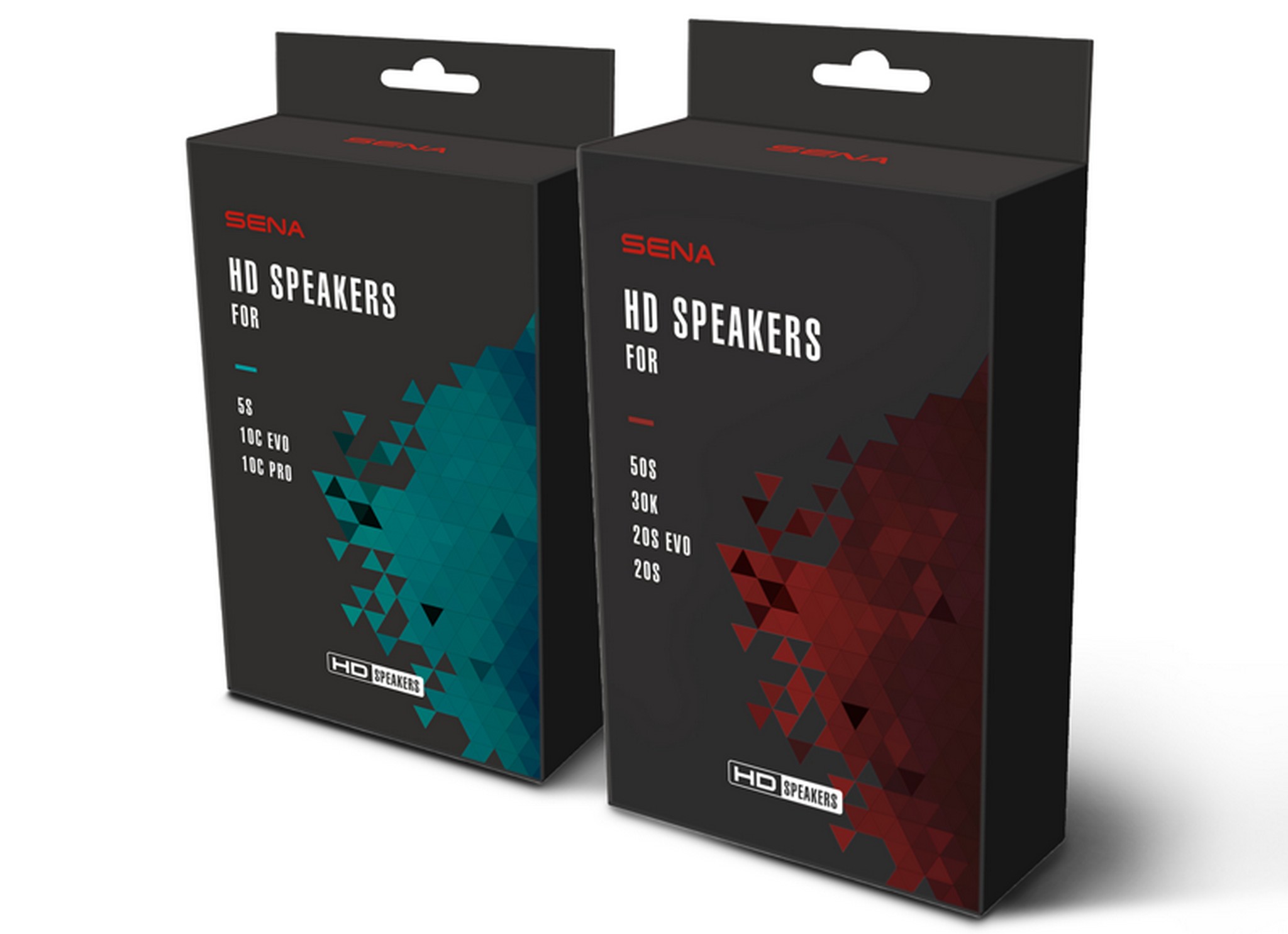
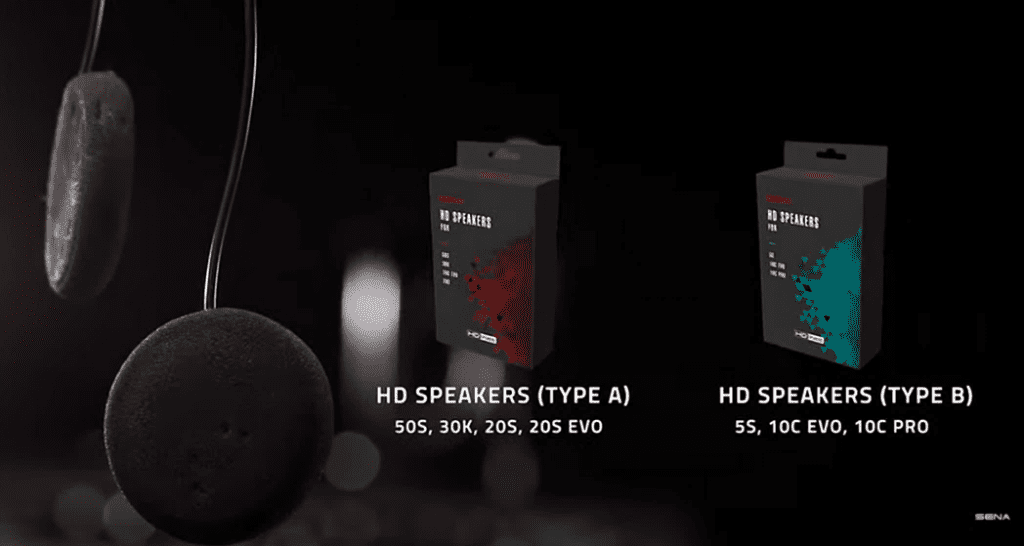


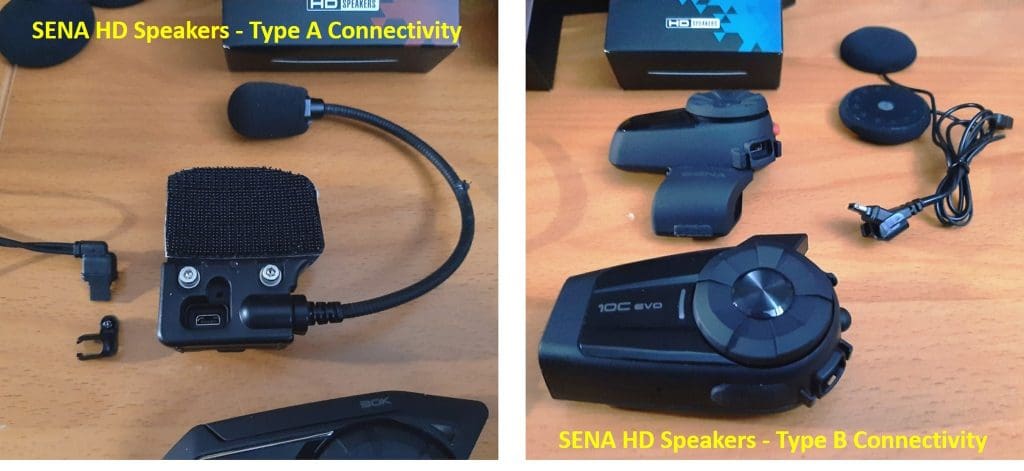
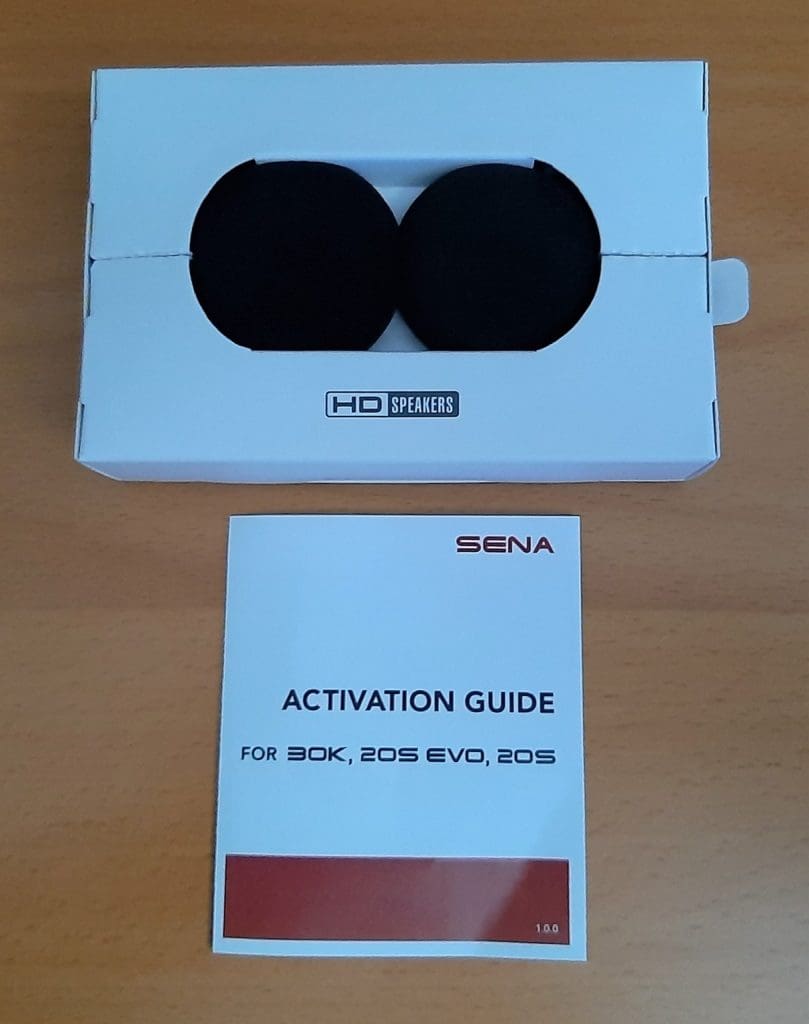

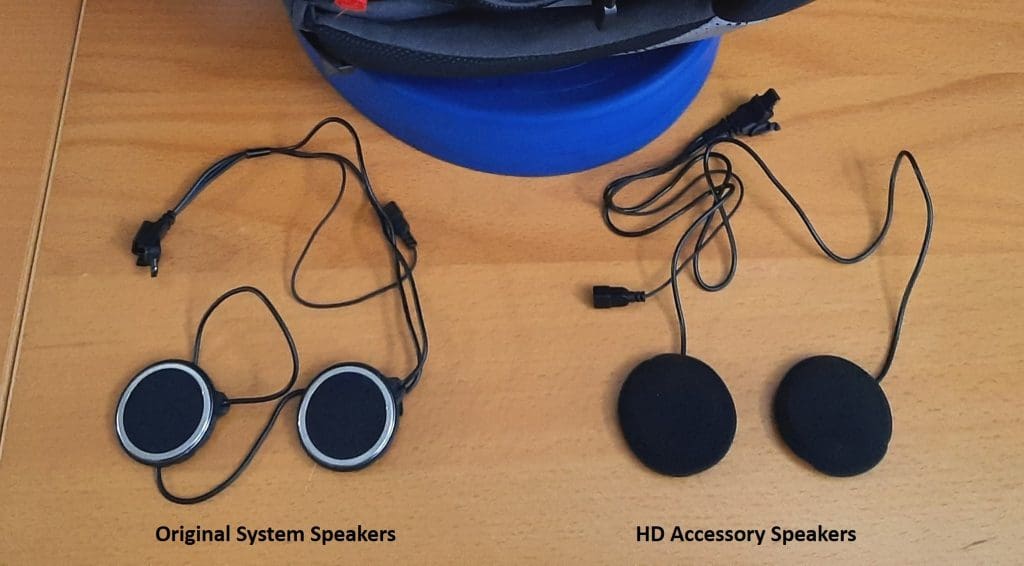

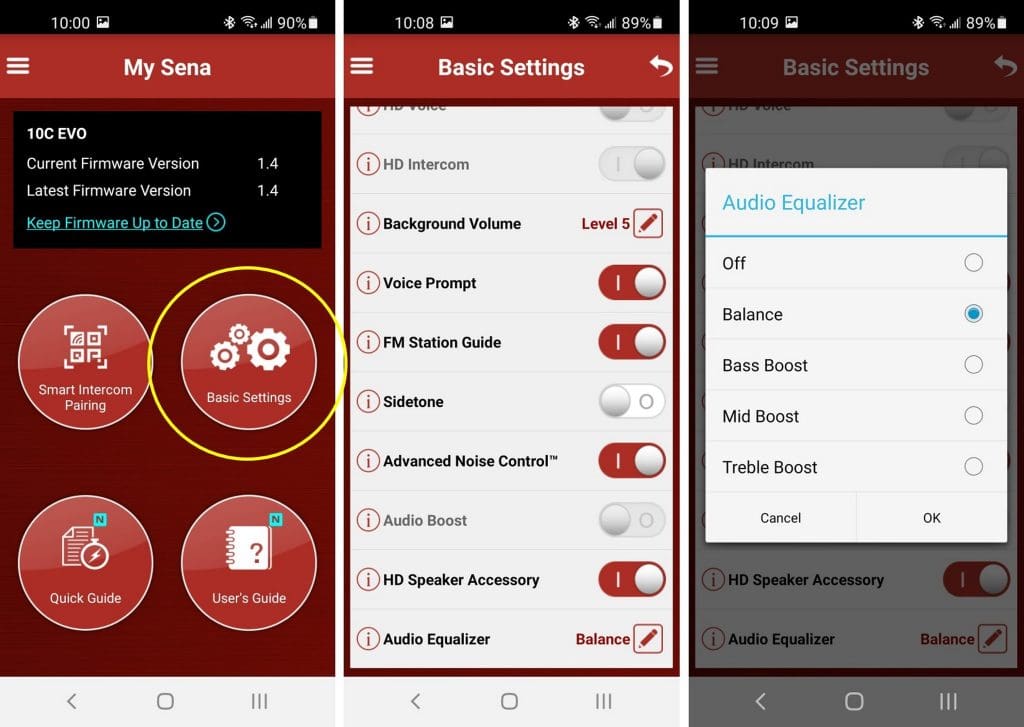
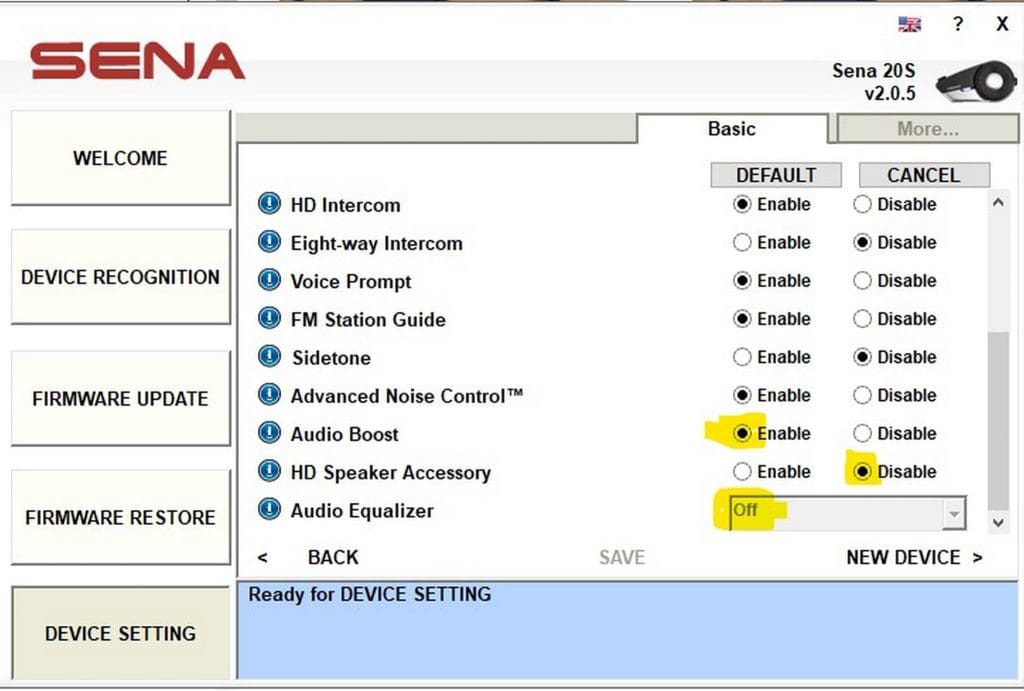
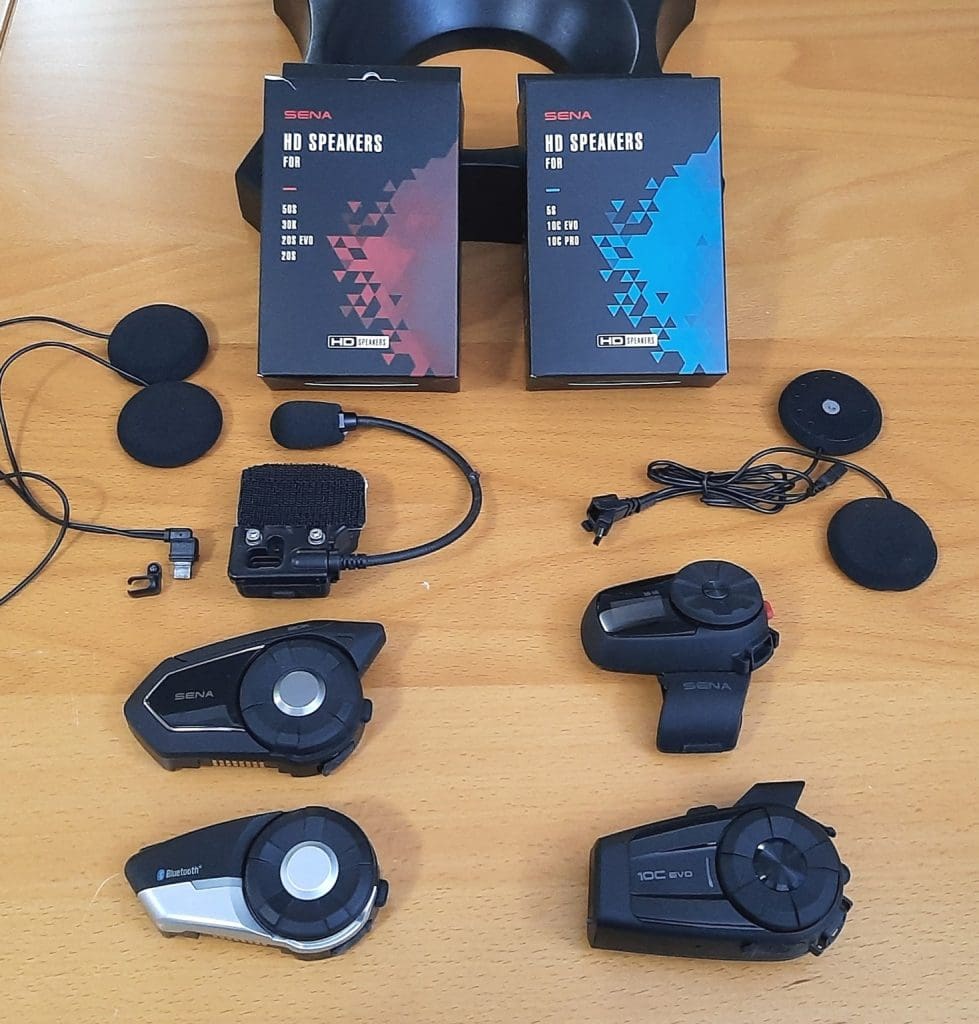
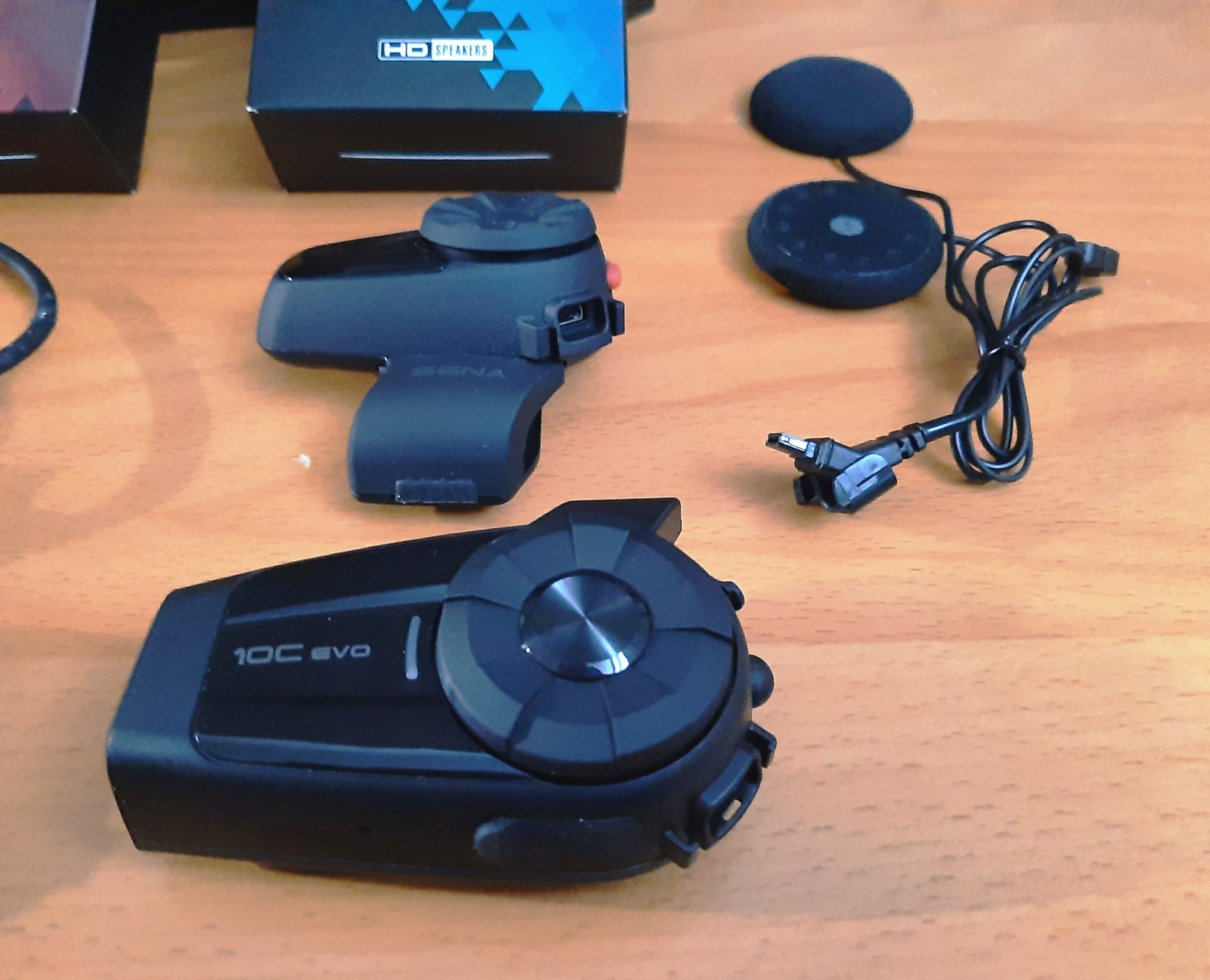
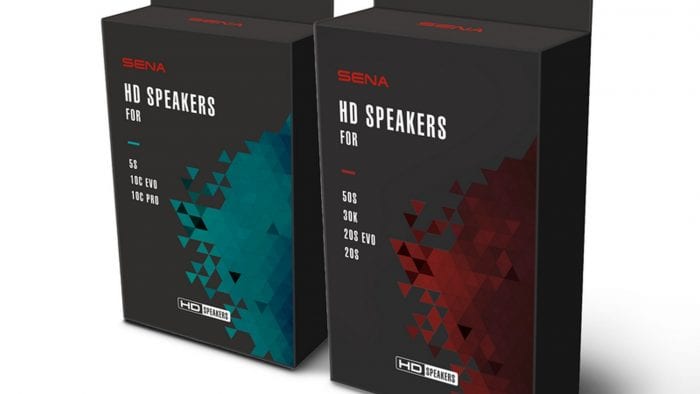
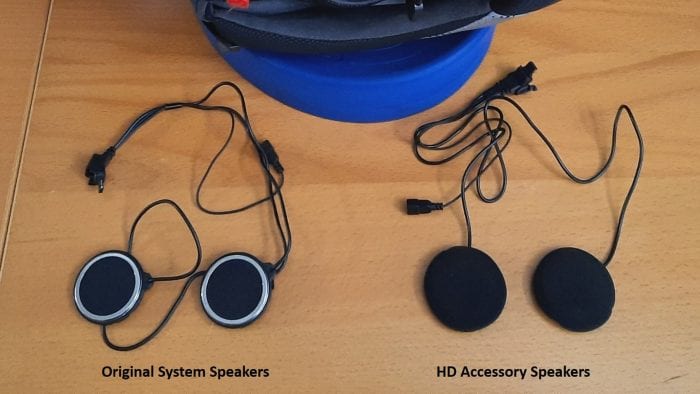
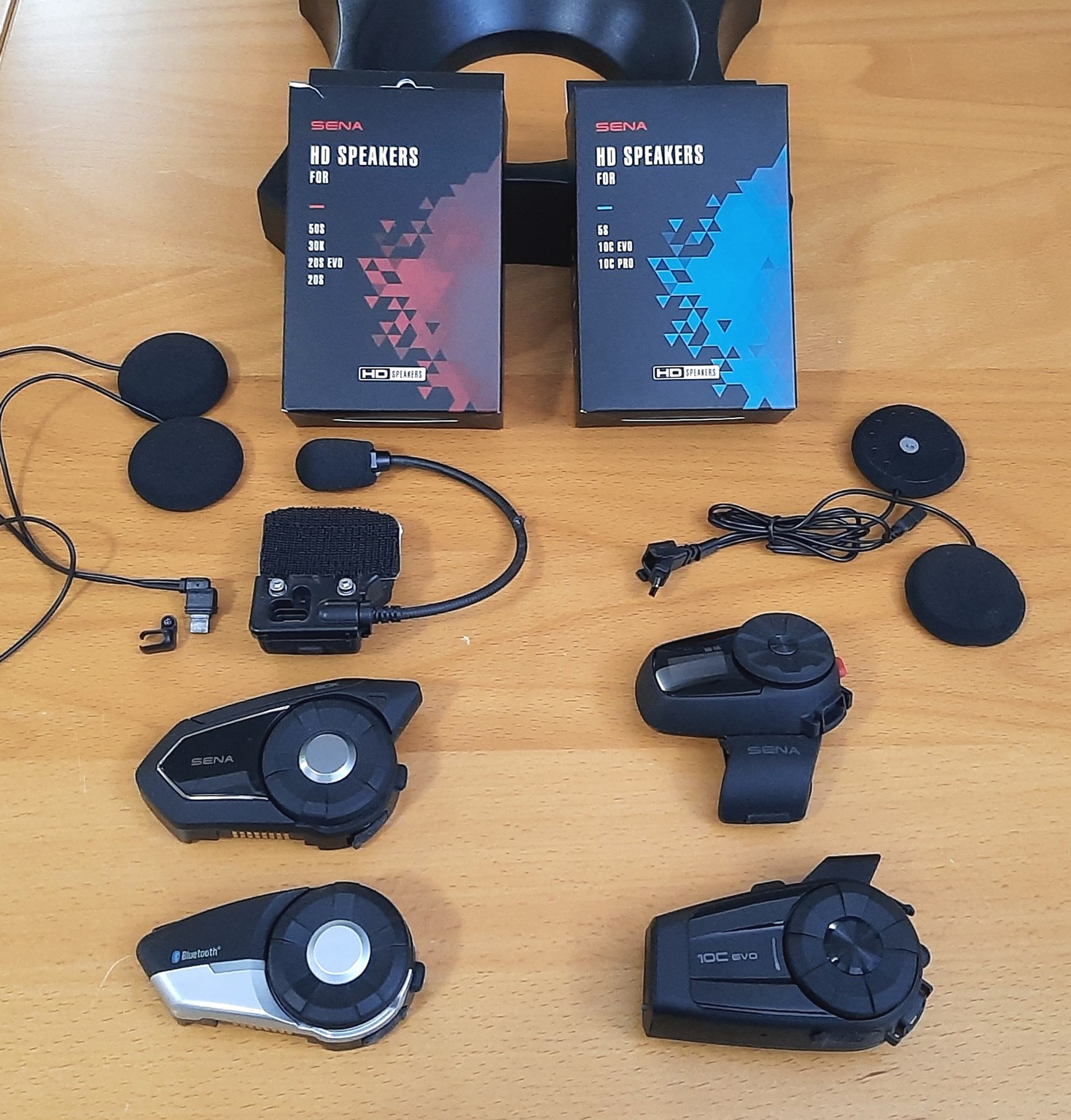
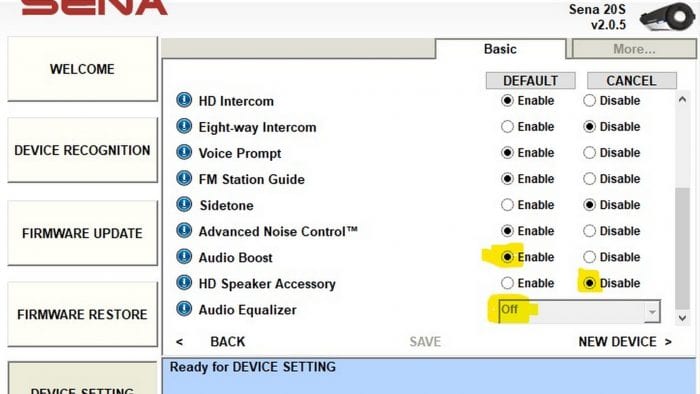
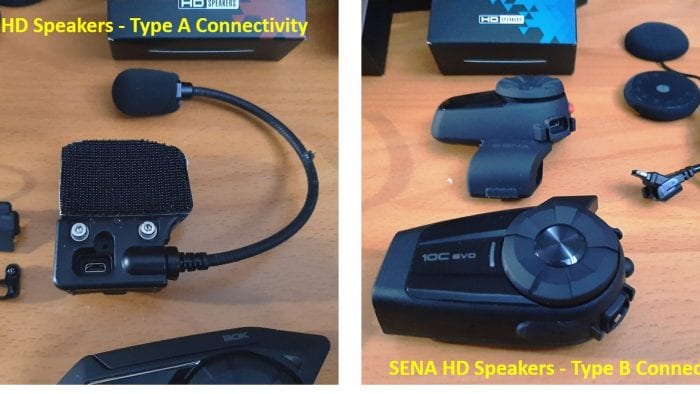
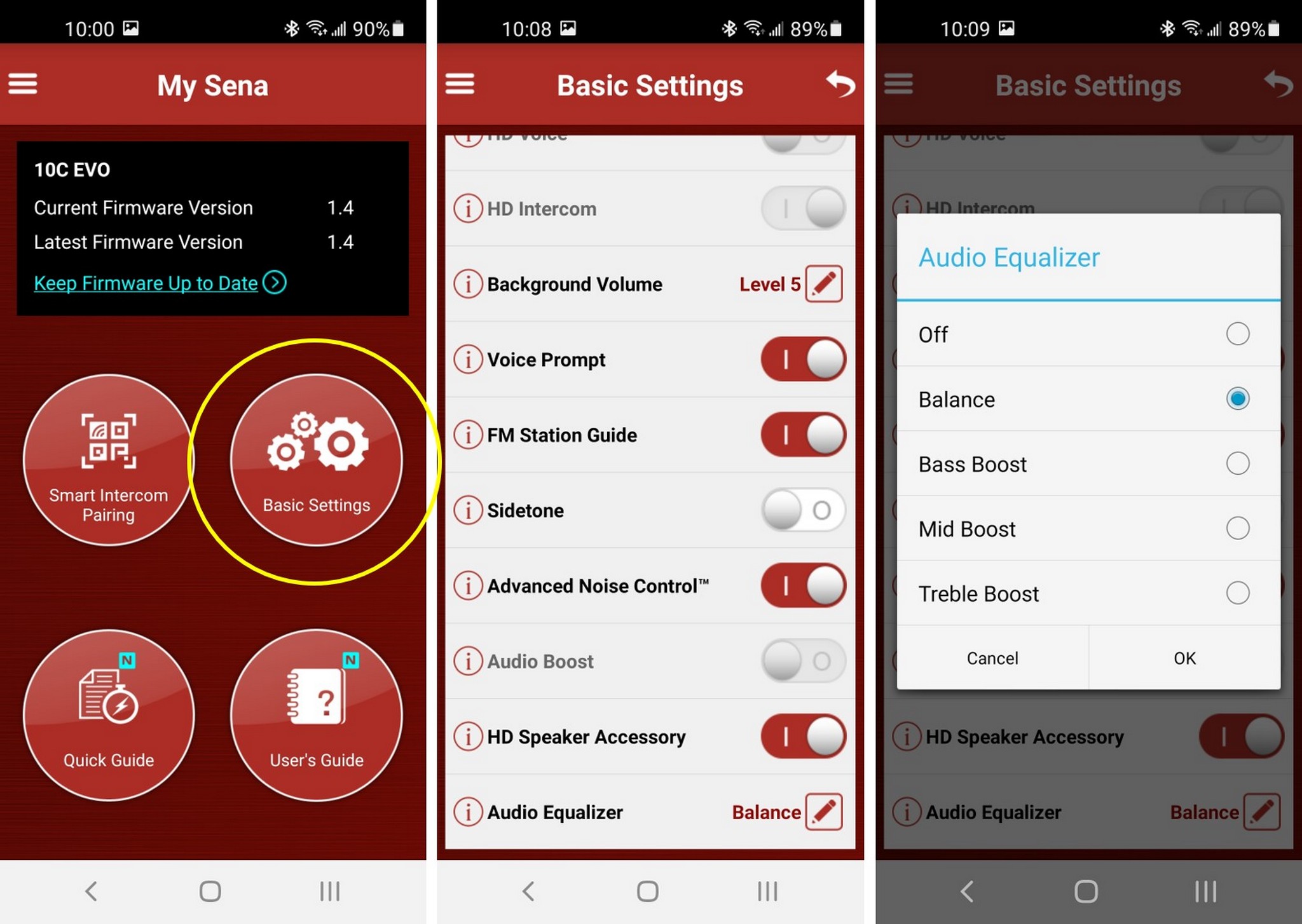
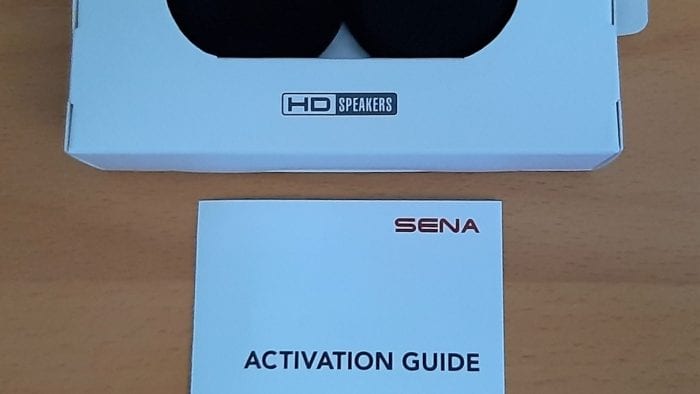

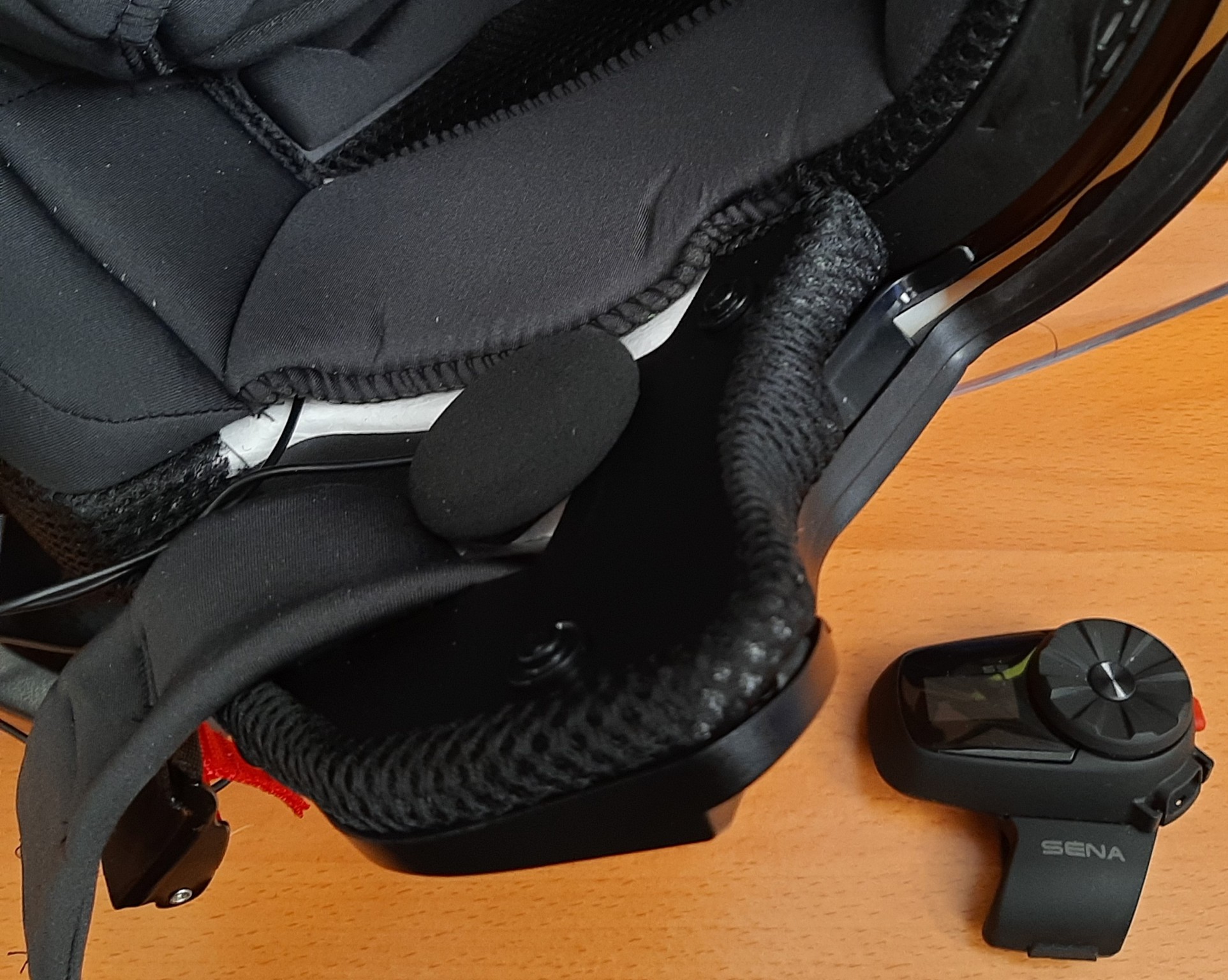

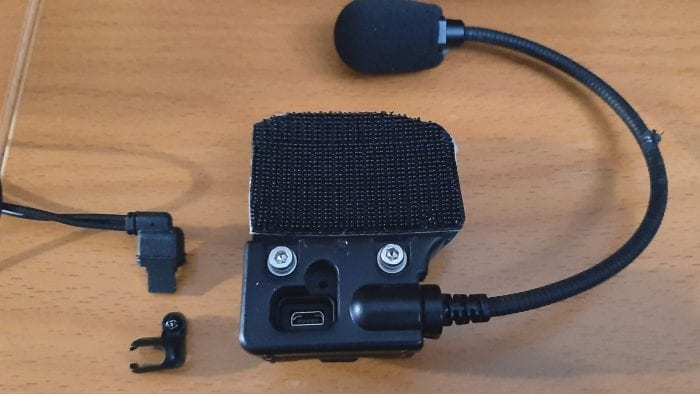

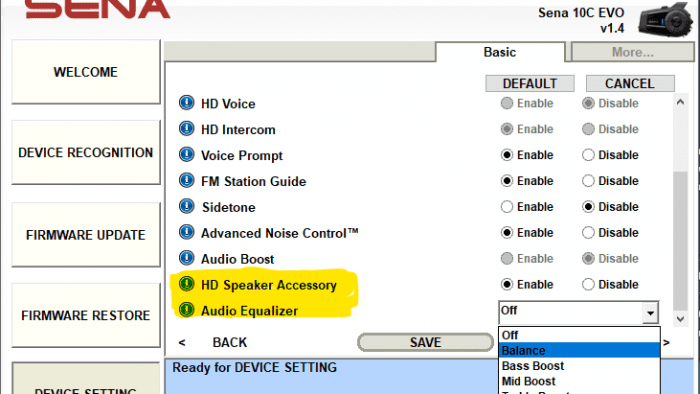


No Comment